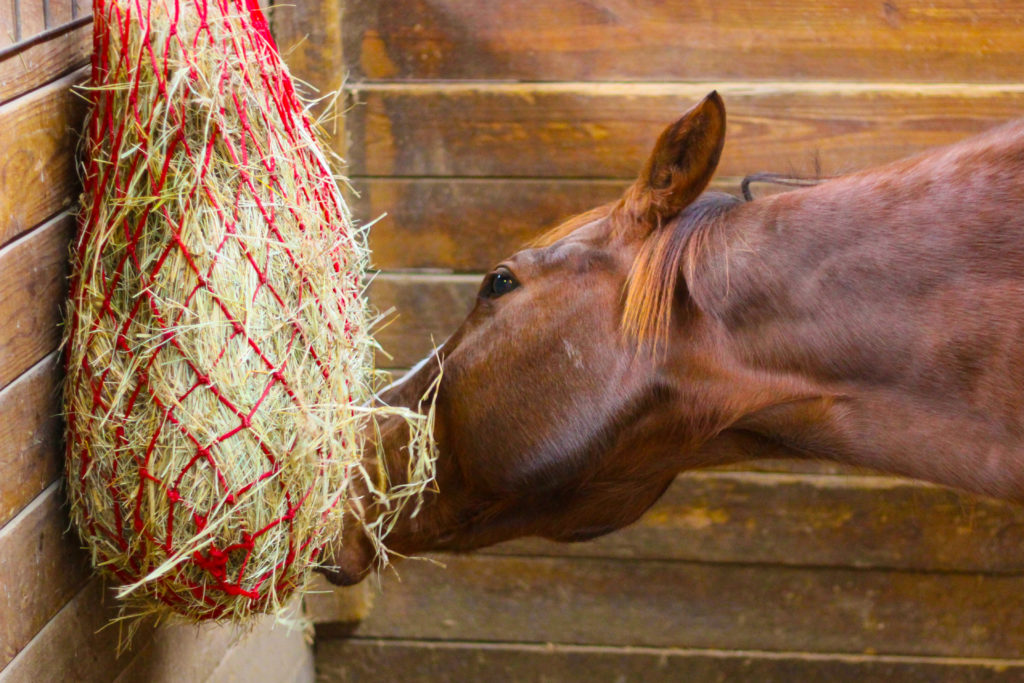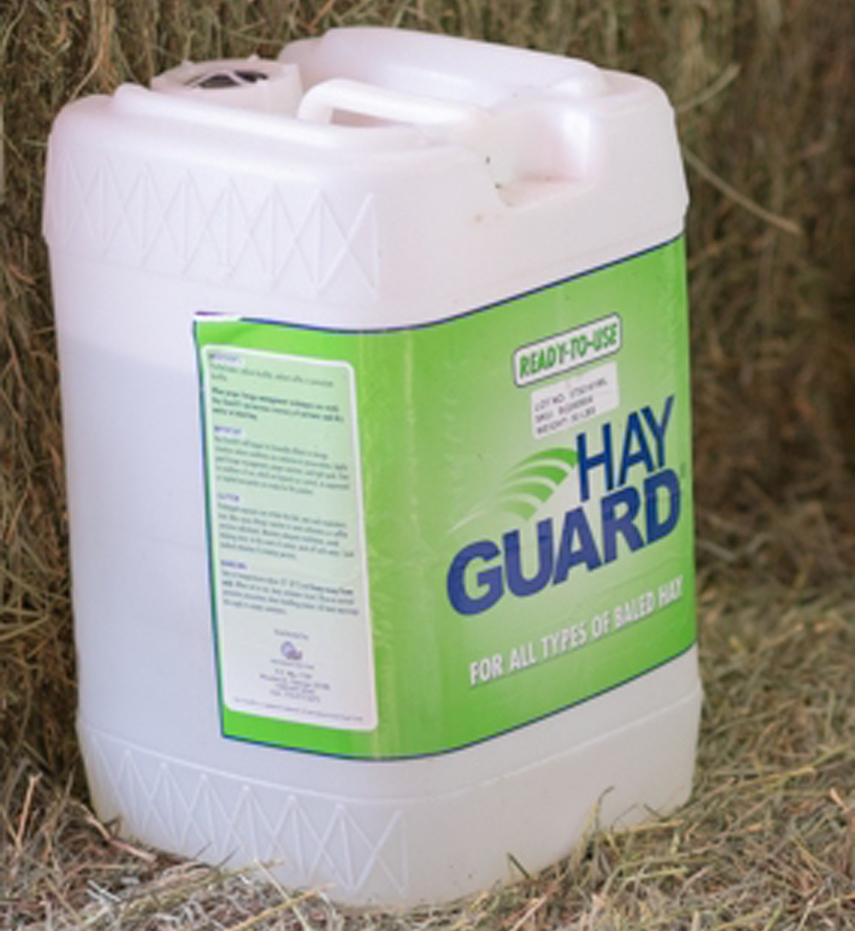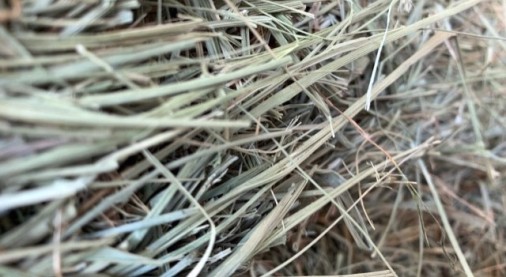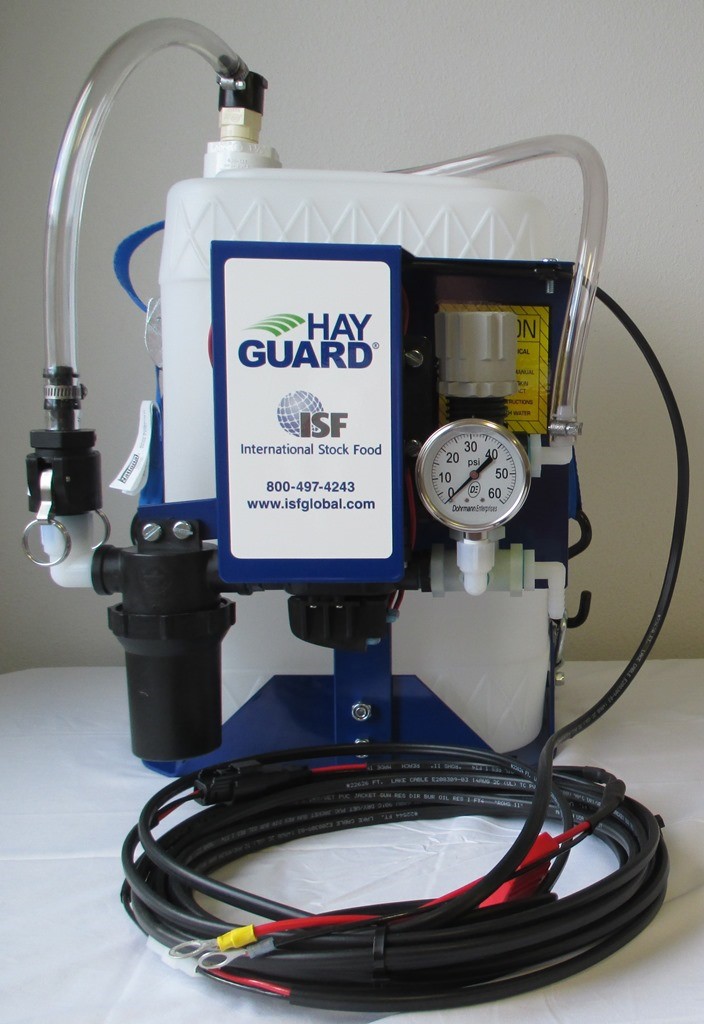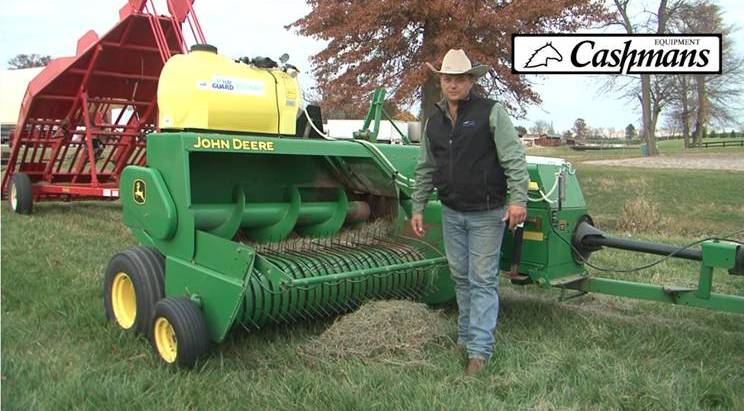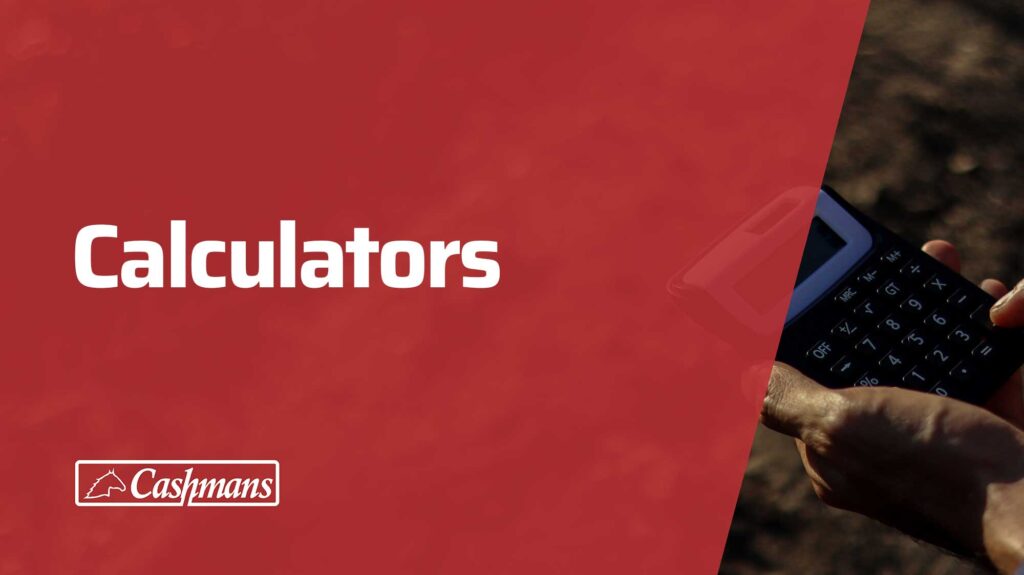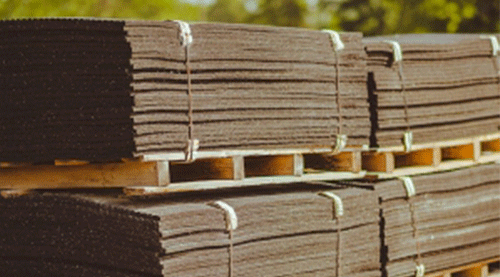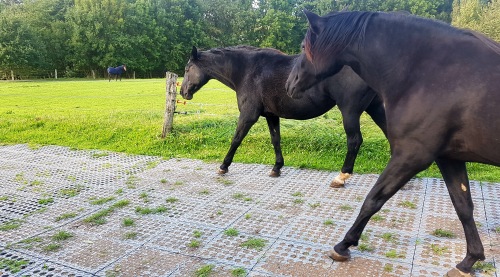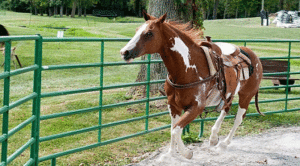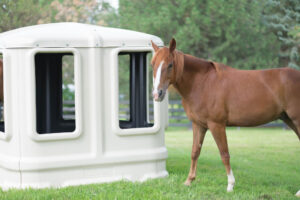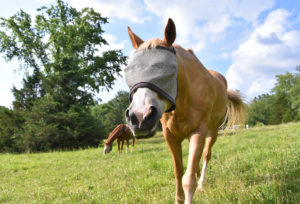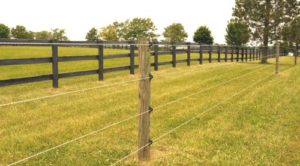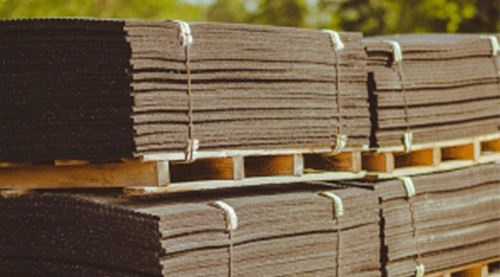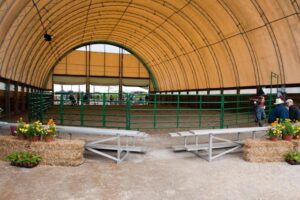
Hay Guard – Making Better Hay
Horsemen’s Corral May 2020 – Lisa Kiley
Agriculture is still one of the most essential businesses in the world. But did you know just how important hay is to the United States in terms of production? It is the 3rd most produced commodity, just behind corn and soybeans. At 130 million tons of hay produced annually, it is double the amount of wheat produced, which is 4th highest in production on the list.
Hay really is at the heart of American agriculture and it’s produced both by commercial operations and in the back yard of the hobby farmer. It is a commonality between anyone who owns livestock, we need hay to keep our animals healthy and happy.
Quality
Every hay season produces its own challenges due to weather and timing. John Ashworth, the National Sales Manager for International Stock Food, provided some great insight on how farmers can achieve a better quality more reliable hay crop utilizing a product called Hay Guard:
“International Stock Food (ISF) is a family business, started in 1949 by JG Forrest. Originally catering mostly to the dairy industry, its roots were started in minerals & supplements. The original product, Silo Guard, was produced from mined sulfur, which had been used in the past to preserve meats and foods for human consumption. This led to the interest of ISF to use it as a preservative for forages.” John advised.
“The family’s 2nd generation moved to using lab created products which are more controlled, consistent, and have a higher potency which means that they require less product to be applied while retaining a food grade quality product” He continued, “Now the 3rd generation is running the business, which is based out of the Atlanta, GA area.” The mission has always been clear, “Quality Animals Start with Quality Forage”. John stressed that Forage 1st means less supplemental products, “Comparative products are often sold out of much larger agriculture companies where preservatives are just a small part of what they do. ISF is clearly focused on forage preservatives and educating the customer on how to make the best quality forage. Forage is all we do”.
So, what exactly is Hay Guard?
John explained, “It’s a preservative that uses Sulfites, which unlike Sulfates, are safe for animals and nontoxic.” By applying Hay Guard, it alters the moisture content in the hay itself preventing spore growth that leads to mold. John used the analogy of a three-legged stool to explain, “In order for the bacteria spores to grow, there has to be three things: moisture, a food source (the hay) and oxygen. But if you take one of those three ‘legs’ out of the equation, the spores can’t grow. Sulfites are natural oxygen scavengers, so their application prevents the bacteria that leads to a whole host of problems from dusty, moldy bales that can cause respiratory issues and colic in horses to the bales heating to a point causing spontaneous combustion that can lead to a fire.”
Hay Guard not only prevents the hay from becoming moldy, John advised, “The sulfites reduce lignin in the hay. Lignin decreases the availability of nutrients in the hay, so even if the horses are eating the correct amount of forage, they are not getting what they need out of it. Treated hay, assuming it has been grown correctly and harvested at the appropriate time, is softer, more palatable and easier to digest.” This equates to a hay that is more nutritious and for growers, that also increases the value of the hay.
Why is Hay Guard preferred over the use of Propionic Acid applications?
“There are actually a few reasons,” John shared, “First Propionic Acid has to be applied at a much higher rate so that it gets to each blade prior to baling.” Hay Guard only needs 3-4lbs per ton, converts to sulfur dioxide and moves it through the bale so it requires much less product. “Producers using acid require application equipment and systems that can cost $5K-$10K while requiring continually reading moisture levels throughout the process.” Hay treated with Propionic Acid often smells bad creating a less palatable bale for many horses.
Not just for commercial operations!
While hobby hay farmers may have thought the use of a preservative like Hay Guard is something for the big commercial operations, John urges them to take another look at what they have to offer. “Because it allows the producer to bale hay when the moisture content is higher, it creates flexibility for the farmer,” he explained. “For a large operation, that can mean getting a few additional cuttings in, but there are also numerous ways it can assist a farmer short on time and help. If a farmer is working a full-time job in town, Hay Guard can allow them to bale before or after work, when dew on the field may have prevented or delayed them from making hay.” In addition, there are much more affordable applicators, with smaller farms being able to get into a system for a fraction of the cost of other options.
Weather Considerations…
Finally, it’s important to consider the weather that farmers have been contending with in the North East and many parts of the Midwest. John shared, “with the way the last several hay seasons have been, it’s almost impossible to put up good quality hay without the assistance of a preservative. Mild winters and wet springs could put a complete halt on production, but Hay Guard allows for hay to be made at higher levels of moisture, up to 25%, while preserving the quality of the hay so that it meets the nutrition needs of the animals that consume it.”




